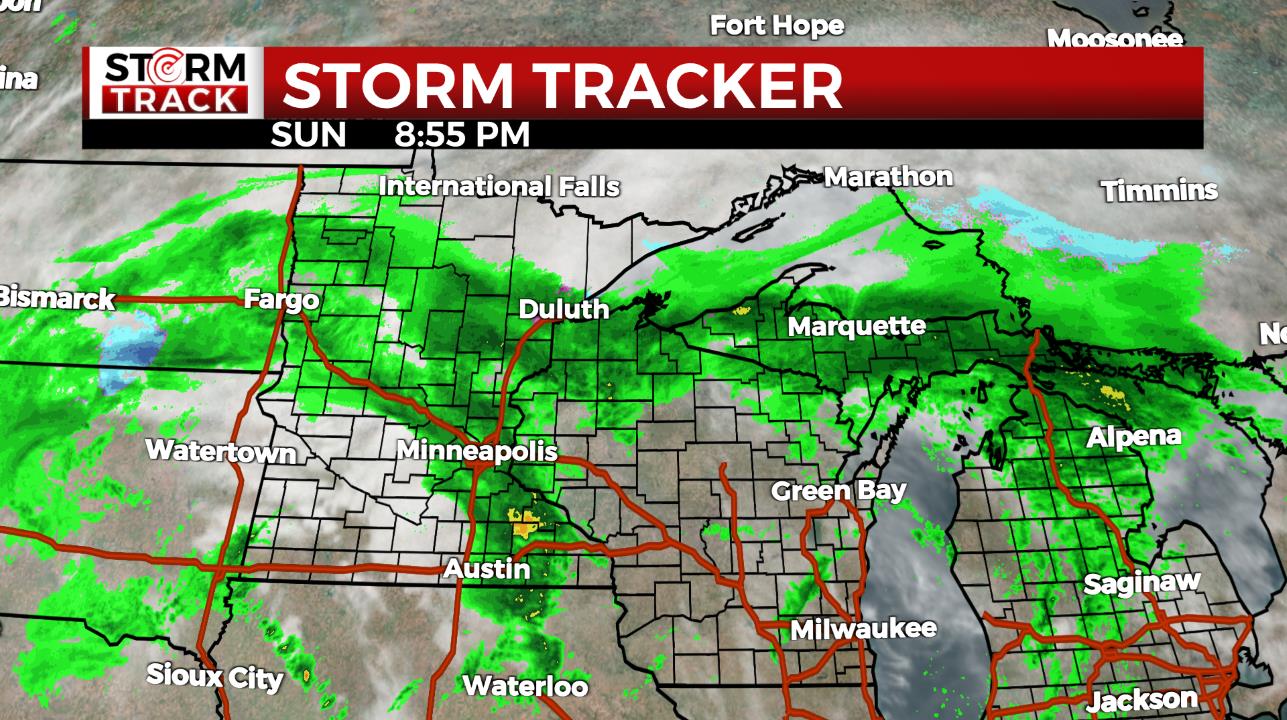
AccuWeather forecast ‘sounding alarm bells’ for hurricane season. What this means for NJ
Show Caption Hide Caption AccuWeather sounds alarm busy 2024 hurricane season. Gulf, Atlantic coasts The combination of building La Niña and historically warm water will lay the groundwork for a blockbuster season, AccuWeather said.
As New Jersey residents we are no stranger to tropical storms and hurricanes. Just within recent years, most of us have memories of Hurricane Irene and Superstorm Sandy which devastated the state. I mean, who could forget seeing the rollercoaster in the water off of Seaside Heights, the intense winds and downed trees, or the piles of rubble that used to be buildings laying up and down the coast.
More recently in 2021 we saw the effects of Tropical Storm Ida which caused destruction and flooding.
Now in 2024, with about four months left until the official start of Atlantic hurricane season, AccuWeather released its early predictions, and it is not looking good.
AccuWeather ‘Sounding alarm bells’
Earlier this week, AccuWeather published its first predictions for the 2024 Atlantic hurricane season which ranges from June 1 to Nov. 30. According to AccuWeather’s Chief Meteorologist Jonathan Porter there are already “serious and growing concerns” of a potentially “super-charged” season based on the combination of two factors: La Niña and historically warm ocean temperatures.
La Niña
On Feb. 8, NOAA issued a La Niña watch. This means that they are expecting a transition from El Niño, which has been shaping weather patterns across the United States since last year, to ENSO-neutral between April and June. The transition from neutral into La Niña is expected to develop between June and August.
But what does this mean for our weather?
According to NOAA, El Niño and La Niña are two opposing climate patterns that break normal Pacific Ocean conditions and can impact weather globally.
An episode of El Niño or La Niña typically last between nine and 12 months and occur every two to seven years on average. El Niño typically occurs more frequently than La Niña.
No school: When is spring break in 2024 for North Jersey schools? Check our list
La Niña is declared when trade winds pick up, pushing warm water toward Asia. When this happens, upwelling increases in the Pacific near the Americas and brings cold water to the surface.
La Niña typically brings drought to the southern U.S., heavy rains and flooding in the Pacific Northwest and Canada, and can also lead to a more severe hurricane season in the Atlantic due to reduced wind shear, according to NOAA.
Seeing as the expected arrival of La Niña might coincide the Atlantic hurricane season, this could be a cause for concern.
Warm ocean temperatures
The other main factor that meteorologists are keeping an eye on at the moment is the ocean temperature, specifically in an area known as the main development region, a critical area of the Atlantic where most of the hurricanes that we see here in New Jersey start to form.
As of mid-February, the temperatures in this region and across the Atlantic were what they typically are in mid-July.
According to AccuWeather, “warm water is fuel for hurricanes” so the potential for record-shattering warmth across the Atlantic during hurricane season is definitely a cause for concern.
The combination of record warm waters with the development of La Niña could mean that we are in for a rough hurricane season, based on AccuWeather’s prediction.
What does this mean for New Jersey?
While AccuWeather’s forecast is a good projection of the active season we may be heading into, it is not definitive and there are still a lot of “what ifs” according to New Jersey State Climatologist Dr. David Robinson.
NJ: Former North Jersey home of prominent business minds, treasure hunter listed for $1.5M
“There are a lot of ‘what ifs’ to consider. If the water temperature stays high, if the La Niña develops in time to impact the season,” Robinson said.
According to Robinson, it is likely that the ocean will remain warm, but it is hard to predict exactly when the La Niña will develop. Other factors such as dust coming off of the African continent or tropical wave patterns can impact storm development as well, but we can’t take those things into account yet as they have not happened.
“The only thing that can be said right now is that when you have more storms out there in the Atlantic basin, the chance of one or more of them impacting New Jersey is going to increase,” said Robinson. “It could be a season where the storm track tends to bring the storms into the gulf and the Caribbean or out into the central Atlantic. But it could also be a season where storms take a turn up the coast. So, we don’t know yet where these storms are going to travel, but the fact that there could be more of them then normal would increase our chances.”
Storm trends
Another factor that Robinson touched on is the fact that we have seen a very active storm pattern in the Atlantic basin over the last couple of decades. Some of this can be attributed to long term oscillatory phenomenon in the Atlantic Ocean that have nothing to do with human influences. Some of the activity can also be attributed to human influences as there have been “less than subtle hints” that humans are amplifying the dangers and impacts of these storms.
“We are warmer. Warmer atmosphere, warmer oceans, and that provides more energy, more fuel, and more moisture to these storms. So, the threats of these storms producing a lot of rainfall and being stronger as they make their way up the Atlantic coast has increased,” Robinson said.
While this does not mean we will suddenly get swarmed by major hurricanes every season, the probability of major storms occurring seems to be changing.
“They are still infrequent enough that it is difficult to name a trend, but from what we have seen in just the last couple of decades, it does appear that we are certainly in a generation where were seeing a lot of these storms,” said Robinson.
Another factor to consider in the equation is the fact that people continue building and moving into vulnerable areas such as the coast.
While that is something that is not to be ignored, according to Robinson, looking strictly at the physical weather and climate side of things it does appear that the system has been more active. Projections are that it will remain if not become increasingly active and impactful in the years ahead.
Staying vigilant and prepared
As always around hurricane season, those in New Jersey and along any eastern coastline need to be vigilant and prepared.
“Know how to act should a storm threaten our state,” said Robinson. “Everyone should always be prepared.”
If you live at the shore, make sure you know the evacuation routes, have survival packages prepared with water, flashlights, batteries, etc., and know who to listen to if you are asked to evacuate.
If you plan to vacation on the coast, it does not hurt to keep an eye on the forecast and educate yourself about what to do if a storm were to pop up.
Even if a storm is 500 miles out to sea and not directly impacting our state it could cause changes in surf and rip currents along our beaches which is another thing to pay attention to if you plan on swimming in the ocean.
As for North Jerseyans and those inland, you should be prepared for potential flooding, wind, power outages, and downed trees.
“We’re a coastal state and people can’t forget about that,” said Robinson.
As the season creeps closer, additional forecasts and predictions will come out from AccuWeather, the National Weather Service Hurricane Center, Colorado State’s Seasonal Hurricane Forecast, and more.
Stay vigilant, keep an eye on the forecasts, and stay prepared, but don’t worry too much. If you have a vacation planned, don’t cancel it based on this initial projection.
“When we have a season that is projected to be an active one it certainly catches some attention,” Robinson said. “But people should not change any plans or say they are not going on vacation this summer because there may be more hurricanes. Past history does not suggest that as an option that anyone would recommend.”
Source: eu.northjersey.com



